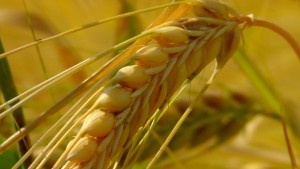
The rugged land and the fact that properties were small did not favour extensive growing of cereals in Mani. As a result, the quantities of grain produced were just enough to cover the needs of local communities. The residents were more engaged in the growing of barley and corn and less in wheat production. In the areas called Outer Mani and Northern Prosiliaki Mani, the soil and production conditions were more favourable for growing grain but the quantities produced were not enough to support trading. Also, in the Sminos area, mainly due to the river, the fertile soil favoured the cultivation of cereals. The existence of a water-mill complex by the river confirms the hypothesis that cereals were cultivated in the area. In the local community of Melissa, a manually operated grain sorter and laundry was used to separate cereals into different qualities depending on the size of the grain and the impurities found in it. The increased demand for cereals to cover the basic nutritional needs of the population made people inventive in order to increase production. For example, the residents of Mesa Mani created “pezoules”, the terraces that are characteristic of the landscape and practiced terrace cultivation.
The first processing of cereals used to take place on threshing floors, normally built in groups near the villages. The spots chosen for the building of the grain processing plants were open and sunward so that threshers would take advantage of the summer wind for the winnowing and threshing of the wheat. Normally, domesticated animals were used for threshing but women also are said to have often threshed with their own feet.
For the production of flour, a network of water mills mainly was used. While water mills prevailed during the ‘pre-industrial’ period, there were also windmills, on the beachfront locations of Gerolimenas, Vatheia and Speira, as well as sea mills in 19th century Gytheio. The grinding of cereals was also done in homes using traditional hand mills.

The first processing of cereals used to take place on threshing floors, normally built in groups near the villages. The spots chosen for the building of the grain processing plants were open and sunward so that threshers would take advantage of the summer wind for the winnowing and threshing of the wheat. Normally, domesticated animals were used for threshing but women also are said to have often threshed with their own feet.
For the production of flour, a network of water mills mainly was used. While water mills prevailed during the ‘pre-industrial’ period, there were also windmills, on the beachfront locations of Gerolimenas, Vatheia and Speira, as well as sea mills in 19th century Gytheio. The grinding of cereals was also done in homes using traditional hand mills.


